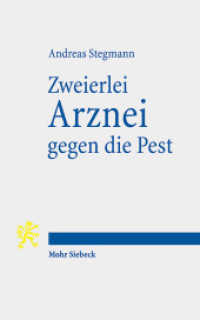- ホーム
- > 洋書
- > ドイツ書
- > Mathematics, Sciences & Technology
- > Earth Science
Full Description
This volume is the second of a two-volume set of the Proceedings of the XXVI International Conference on Living and Walking in Cities, held September 6-8 2023 at the University of Brescia, Italy.







